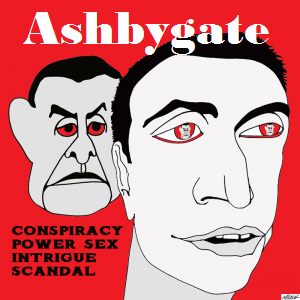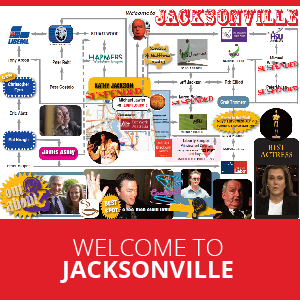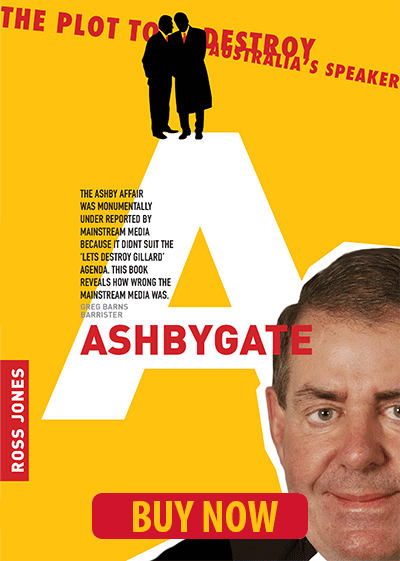After spending the last few years pandering to the cult of Trump, Murdoch journalist Adam Creighton is now fully immersed in the culture of the Institute of Public Affairs (IPA) as its Chief Economist.
In a recent article in The Australian, Creighton peddles two of the IPA’s favourite obsessions — Islamophobia and scare-mongering on immigration levels.
Creighton complains that Hulya, whom he says is a Muslim woman with poor English, was given accommodation in a social housing estate.
Creighton notes responders on social media made ‘unprintable’ comments on this and says:
‘Hulya must have been one of the 1.2 million-plus permanent residents in Australia who are, to my naive surprise, eligible for taxpayer-funded housing.’
Creighton does not ask if Hulya entered Australia via the Humanitarian Program or as a sponsored family migrant or a skill stream migrant. Humanitarian Program entrants have been provided accommodation on arrival since we started taking refugees after World War II. Australia has never brought Humanitarian Program entrants to Australia and just left them at the airport.
Is that what Creighton is now proposing be done?
Family sponsored and skill stream migrants have generally been ineligible for public housing since the 1980s (it depends on the eligibility rules of different state governments). If Hulya was family sponsored by her grandchildren, we do not know the home situation of her grandchildren to know why she is not living with them and why she was found eligible for public housing by the Victorian Government.
Making judgments about this without knowing the details is classic IPA, especially when a Muslim is involved.
Skill stream migrants are generally ineligible for public housing on financial grounds and are also ineligible for any social support for four years after arrival, even though they must pay the full rate of all taxes during this time.
From 1945 to the 1980s, we used to provide almost all new migrants (refugees and all others, particularly assisted passage migrants from the UK and Ireland) with accommodation and board on arrival via government-owned and run migrant hostels. We also arranged either a government job (for example, on the Snowy Mountains Scheme) or with a large private company (such as BHP or Holden).
Creighton must be very happy we don’t do that anymore. Most new migrants must fend for themselves on arrival.
Immigration levels
Creighton then turns to immigration levels by saying:
‘The latest monthly net permanent and long-term arrival figures from the ABS came in at over 33,200 for May, the highest ever for that month. We don’t have the June figures just yet, but net migration for the 11 months of last financial year is already 89,000 above the 335,000 the budget papers had forecast for the full 12-month period.’
The Government promised to cut net immigration back to sustainable, pre-COVID levels before the Election, which would imply around 250,000 a year, where it had hovered for years. For this calendar year, it’s on track to exceed 550,000.
This statement contains a number of glaring mistakes that anyone with the most basic understanding of immigration data would not make.
Creighton treats net permanent and long-term movements as identical to net migration. If they were identical, the ABS would not use two different terms. While there have been years when the two have been close and looking at trends in net permanent and long-term movement data is a good way to start forecasting net migration, since COVID, the relationship has been much more uncertain (see Chart 1). Creighton makes no allowance for this.

In addition to Creighton’s mistake of treating net permanent and long-term movements as identical to net migration, he compounds his mistake by ignoring the fact that the Australian Bureau of Statistics (ABS) has already published net migration data for the first six months of 2024-25. The ABS’s preliminary estimate for net migration for the first six months of 2024-25 is 154,800 compared to net permanent and long-term movements for the same period at 178,100.
While it is quite possible that net migration in 2024-25 may be above the Treasury forecast of 335,000, Creighton will be disappointed to learn it will be well below net permanent and long-term movements for 2024-25 and nowhere near 89,000 plus over the Treasury forecast.
Creighton’s suggestion that net migration in calendar year 2025 is on track to hit 550,000 is also presumably based on some extrapolation of net permanent and long-term movement data from January to May 2025. He is effectively saying net migration will increase from 340,000 in 2024 (as already published by the ABS) to 550,000 in 2025.
Anyone who thinks such a big jump in net migration will happen should cross-check to see if other immigration data is giving similar signals. Creighton could have done this by cross-checking with onshore and offshore visa grant data; changes in stocks of temporary entrants; as well as total net movement (short-term and long-term) data. He should also have asked, “What policy changes would bring about such a large increase in net migration?”
Creighton does not attempt to do this. Is that because he is happy with the scare-mongering effect of his extrapolation?
The key driver of net migration in recent years has been students and, to a lesser degree, working holidaymakers.
Creighton could have noted that there was a very high student departure rate in November-December 2024, which appears to have driven down net long-term movements in those months. Many of these people returned in January-February 2025, which may have driven up net long-term movements in that period but will not affect net migration when the ABS undertakes its more detailed tracking of movements for its preliminary net migration estimate. (Many of these movements will net out as they have already been counted in net migration in earlier years.)
This data problem stems from the abolition of the passenger departure card, which included a question about a departing passenger’s intentions of returning or not.
Crieghton could also have noted the significant fall in offshore student visa grants and working holidaymaker grants in the 12 months to May 2025 compared to the 12 months to May 2024. Students and working holidaymakers were the two biggest drivers of the boom in net migration in the period 2022-24.
If these are falling, what has increased to replace them? While New Zealand citizen arrivals are up, these would not make up for the decline in student and working holidaymaker grants. No other part of offshore visa grants are up significantly in the 12 months to May 2025 compared to the 12 months to May 2024.
The fact is net migration in 2025 won’t be anywhere near Creighton’s estimate of 550,000. I would be very surprised if it’s not at least 150,000 less than that and possibly 200,000 less.
But Creighton’s core dog-whistling message is “the vast bulk of these new arrivals are from developing nations, where English isn’t a first language nor Christianity a majority religion”. Classic IPA.
He seems not to recall Bob Hawke’s 1989 parliamentary motion for a non-discriminatory migration program in response to John Howard’s 1988 proposal to reduce migration from Asia. In the lead up to the 1996 Election, John Howard repudiated his earlier views on Asian migration in response to the views of Senator Pauline Hanson, who was then disendorsed by the Liberal Party in 1996 because of her opposition to Asian migration.
Will Creighton’s IPA be pressing the Coalition to go back to the 1988 Howard position?
Dr Abul Rizvi is an Independent Australia columnist and a former Deputy Secretary of the Department of Immigration. You can follow Abul on Twitter @RizviAbul.
 This work is licensed under a Creative Commons Attribution-NonCommercial-NoDerivs 3.0 Australia License
This work is licensed under a Creative Commons Attribution-NonCommercial-NoDerivs 3.0 Australia License
Support independent journalism Subscribe to IA.














